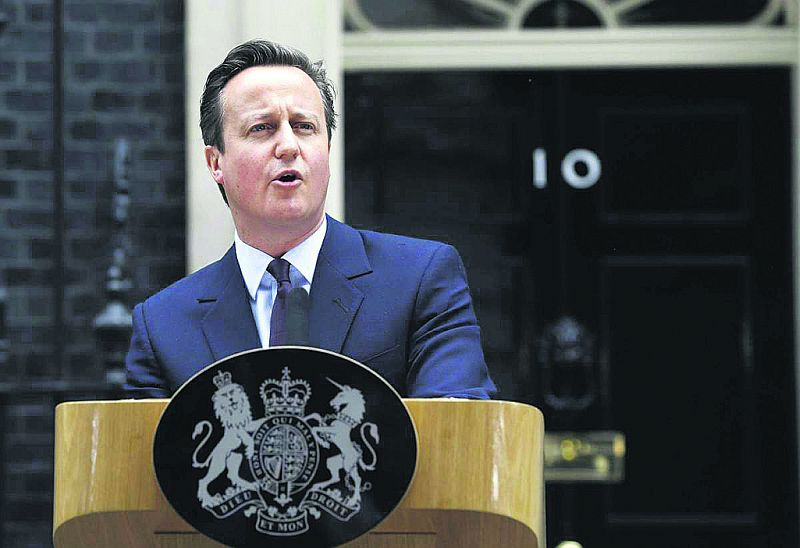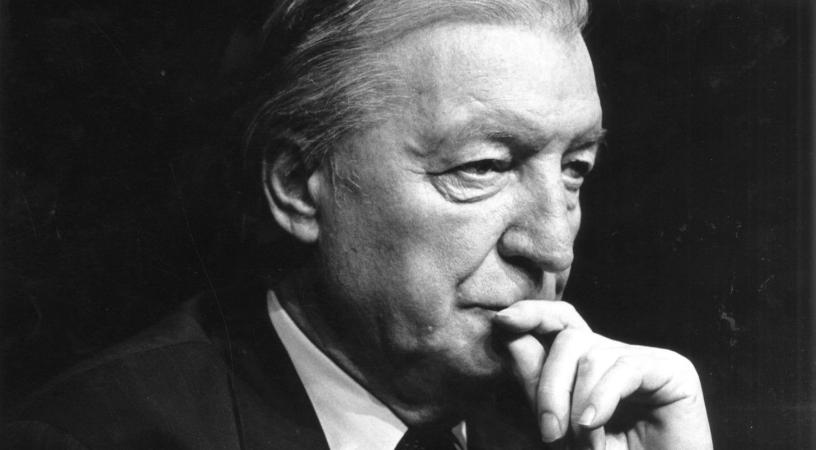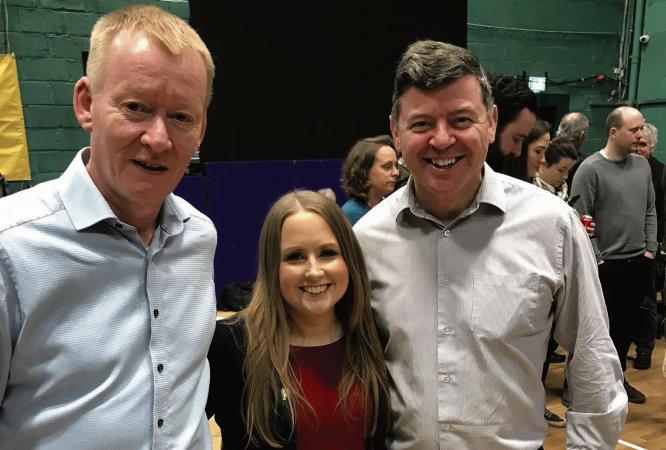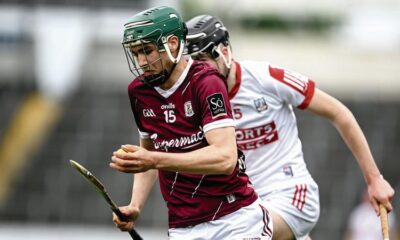Political World
Lessons to be learned here from UK election

World of Politics with Harry McGee – harrymcgee@gmail.com
There are a number of messages from the British election for Irish political parties and movements to take away and digest before our next encounter with the polling booth.
The scale of the Tory victory was stunning – but it must be remembered that that was a symptom of the first-past-the-post system there. The Conservatives got 37.5 per cent of the vote, which was impressive. But it had the PRSTV (proportional representation, single transferrable vote) system we have in Ireland, it might not have secured a majority.
Indeed, Fine Gael’s vote was in that region in 2011 and it was still shy of an overall majority.
But still, Fine Gael strategists might be thinking that if it boxes clever the election might be there for the taking, if they are prepared to make Labour the sacrificial lambs.
There was a very good analysis piece in the Sunday Times this week that disclosed that the Conservatives had deliberately targeted Liberal Democrat seats, even though it was the junior party in coalition.
Therefore the relationship was a little like that of the fox and the gingerbread man, in which after apparent cooperation, the fox gobbled up its unsuspecting passenger.
If Labour was to lose a rake of seats in the general election, who would stand most to benefit? Strangely, it could be Fine Gael in some constituencies rather than Fianna Fail or left-wing parties (especially in more affluent and liberal constituencies).
There has been a lot of talk that Fine Gael might cut loose and hold an early election, soon after the Budget in October. The received wisdom is that Labour needs all the time it can to regather its strength. An early election would not be in its interests.
I don’t believe there will be an early election. This Government will serve its full term. Enda Kenny and Joan Burton have struck up a strong relationship and the trust levels are high. At this remove, that kind of chicanery does not seem likely.
Another obvious factor was that opinion polls got it badly wrong in Britain. It must be remembered the margin of error is plus or minus three per cent. Thus, a party polling on ten per cent could conceivably be attracting 13 per cent of the vote – or as little as seven per cent.
In addition, it is a sample of 100 per cent of the population; whereas the turnout is often lower (66 per cent in the British elections). Pollsters use various measures to try and provide for this (by excluding ‘don’t knows’ for example). But many of those who tell pollsters they will vote (younger people for example) won’t live up to their intentions.
Most British polls had the two main parties neck-and-neck whereas there was a seven-points difference between them in the election (37.5 per cent to 30.5 per cent). Both results were marginally outside the margin for error.
What implications does it have for Ireland? Well, obviously the media (and political parties) lay great store behind opinion polls. But it is often forgotten how blunt a measuring instrument they often are, and have spectacularly got it wrong in the past.
For more, read this week’s Connacht Tribune.
Connacht Tribune
The fine art of good timing when it comes to elections

World of Politics with Harry McGee
Academically, politics is described as a science. But in the real world, it’s more of an art – and one of the big decisions a Government has to make is to decide when to call an election.
Will they see out the full term, or will they go early – either to mitigate the damage they will ship, or to secure a victory before things go awry, or the economy takes a dip, or some kind of controversy erupts?
Timing is everything.
And there’s a bit of art to that – not to mention a lot of luck. If you call it early and win big, you’re a genius. If you call it early and lose, you are the political version of the village fool.
Charlie Haughey was a poor judge of the public mood. Twice he called snap elections and on both occasions they backfired. Haughey succeeded Jack Lynch as Taoiseach in late 1979 and did not – technically – have his own mandate. He tried to remedy that by calling an election in 1981. But it recoiled. Ray MacSharry warned him not to hold it during the H Block hunger strikes when republican prisoners were dying each day. He did not listen to the advice and found himself out of office.
After his return to power in 1987, Haughey tired of presiding over a minority government that kept on losing votes in the Oireachtas (the opposition won nine private members motions).
So he called a snap general election and it backfired. Fianna Fáil lost seats and had to broker a coalition deal with the Progressive Democrats and his long-standing political adversary Dessie O’Malley.
For more, read this week’s Connacht Tribune.
Connacht Tribune Digital Edition App
Download the Connacht Tribune Digital Edition App to access to Galway’s best-selling newspaper.
Click HERE to download it for iPhone and iPad from Apple’s App Store, or HERE to get the Android Version from Google Play.
Or purchase the Digital Edition for PC, Mac or Laptop from Pagesuite HERE.
Get the Connacht Tribune Live app
The Connacht Tribune Live app is the home of everything that is happening in Galway City and county. It’s completely FREE and features all the latest news, sport and information on what’s on in your area. Click HERE to download it for iPhone and iPad from Apple’s App Store, or HERE to get the Android Version from Google Play.
Connacht Tribune
Inch protest arguments are more subtle than Oughterard

World of Politics with Harry McGee
I was cycling down Mount Street in Dublin on Tuesday. It’s a wide esplanade that links the Grand Canal with Merrion Square. The street is a mixture of fine Georgian buildings and modern office blocks.
About half-way down is the office of the International Protection Office, which deals with asylum seekers who have arrived in the country.
Needless to say, the office has been overwhelmed in the past year. Besides an estimated 80,000 refugees who have arrived from Ukraine, there have been about 20,000 people from other parts of the world who have arrived into Dublin (mostly) claiming asylum.
The numbers peaked around Christmas, but they have been falling a little. In January, more than 1,300 people arrived seeking asylum but the numbers fell back to 831 and 858, in February and March respectively.
They are still huge numbers in a historical context.
So back to my cycle on Tuesday. I knew that some asylum seekers were camping outside the International Protection Office, but I was taken aback by how many. There were six tents lined up on the pavement directly outside. Then on the ramp that led down to the basement carpark on the side of the building, there were about another 20 tents.
It looked like what it was, a refugee camp in the middle of Dublin’s business district. If you pan out from Mount Street, you will find tents here and there in nearby streets and alleys. There were a good few tents in an alleyway off Sandwith Street about 500 metres away.
For more, read this week’s Connacht Tribune.
Connacht Tribune Digital Edition App
Download the Connacht Tribune Digital Edition App to access to Galway’s best-selling newspaper.
Click HERE to download it for iPhone and iPad from Apple’s App Store, or HERE to get the Android Version from Google Play.
Or purchase the Digital Edition for PC, Mac or Laptop from Pagesuite HERE.
Get the Connacht Tribune Live app
The Connacht Tribune Live app is the home of everything that is happening in Galway City and county. It’s completely FREE and features all the latest news, sport and information on what’s on in your area. Click HERE to download it for iPhone and iPad from Apple’s App Store, or HERE to get the Android Version from Google Play.
Connacht Tribune
Sinn Féin hunt for seats in ‘locals’ across Galway

World of Politics with Harry McGee
God that was a dramatic and historic weekend in England, wasn’t it? So much excitement, so much change, so much hype, so much out with the old and in with the new, and what looks like the coronation of a new leader. Yes, the local elections in Britain were something else weren’t they!
Apologies for not going on about King Charles III but the contract I signed when I became a lifelong republican forbids me to discuss the topic!
I know the British local elections sound a bit boring by comparison, but the results were stunning.
The Conservatives lost nearly 1,000 seats, the British Labour Party gained almost 500 and both the Lib Dems (with 350 gains) and the Greens (gaining over 200) also had amazing days at the polls.
It was Labour’s best day since 2002 but its victory was only partial. The Greens and the Lib Dems actually made gains at the expense of Labour in more affluent areas, and in parts of Britain where there were high numbers of graduates.
It was in the Red Wall constituencies in the North of England where the Labour recovery was strongest. These are working class constituencies with pockets of deprivation where people voted for the Labour Party forever. But all of those constituencies voted for Brexit and then voted for the Tories in the next general election. Labour is now winning back some of those votes.
Local elections are classified as second-tier elections which essentially means – from a national perspective – they are not life-or-death affairs, and not everything turns on them. Of course, it’s really important to have good local representation. But they are not an amazing weather vane for who rules the country.
For more, read this week’s Connacht Tribune.
Connacht Tribune Digital Edition App
Download the Connacht Tribune Digital Edition App to access to Galway’s best-selling newspaper.
Click HERE to download it for iPhone and iPad from Apple’s App Store, or HERE to get the Android Version from Google Play.
Or purchase the Digital Edition for PC, Mac or Laptop from Pagesuite HERE.
Get the Connacht Tribune Live app
The Connacht Tribune Live app is the home of everything that is happening in Galway City and county. It’s completely FREE and features all the latest news, sport and information on what’s on in your area. Click HERE to download it for iPhone and iPad from Apple’s App Store, or HERE to get the Android Version from Google Play.












